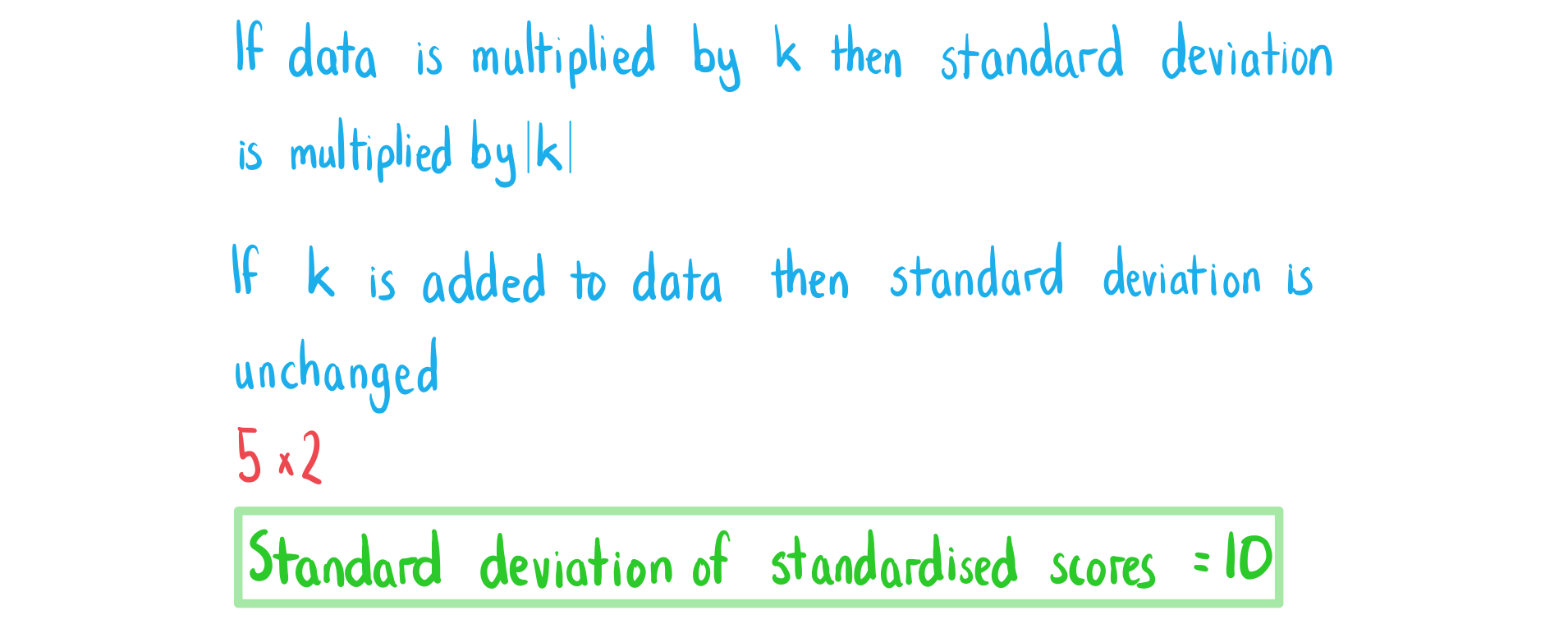Did this video help you?
Linear Transformations of Data (DP IB Maths: AA HL): Revision Note
Linear Transformations of Data
Why are linear transformations of data used?
- Sometimes data might be very large or very small
- You can apply a linear transformation to the data to make the values more manageable
- You may have heard this referred to as:
- Effects of constant changes
- Linear coding
- You may have heard this referred to as:
- Linear transformations of data can affect the statistical measures
How is the mean affected by a linear transformation of data?
- Let
be the mean of some data
- If you multiply each value by a constant k then you will need to multiply the mean by k
- Mean is
- Mean is
- If you add or subtract a constant a from all the values then you will need to add or subtract the constant a to the mean
- Mean is
- Mean is
How is the variance and standard deviation affected by a linear transformation of data?
- Let
be the variance of some data
is the standard deviation
- If you multiply each value by a constant k then you will need to multiply the variance by k²
- Variance is
- You will need to multiply the standard deviation by the absolute value of k
- Standard deviation is
- Standard deviation is
- If you add or subtract a constant a from all the values then the variance and the standard deviation stay the same
- Variance is
- Standard deviation is
- Variance is
- Variance is
Examiner Tip
- If you forget these results in an exam then you can look in the HL section of the formula booklet to see them written in a more algebraic way
- Linear transformation of a single variable
-
- where E(...) means the mean and Var(...) means the variance
Worked example
A teacher marks his students’ tests. The raw mean score is 31 marks and the standard deviation is 5 marks. The teacher standardises the score by doubling the raw score and then adding 10.
a)
Calculate the mean standardised score.

b)
Calculate the standard deviation of the standardised scores.


You've read 0 of your 5 free revision notes this week
Sign up now. It’s free!
Did this page help you?
